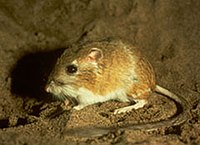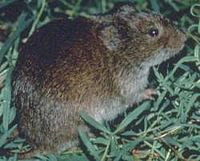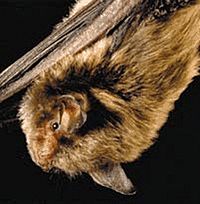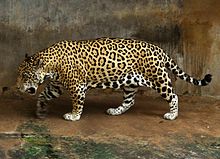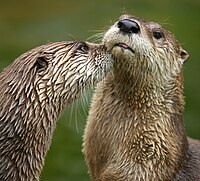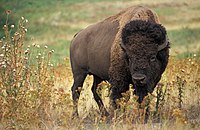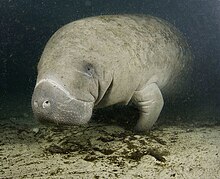This is a list of North American mammals. It includes all mammals currently found in the United States, St. Pierre and Miquelon, Canada, Greenland, Bermuda, Mexico, Central America, and the Caribbean region, whether resident or as migrants. This article does not include species found only in captivity. Mammal species which became extinct in the last 10,000 to 13,000 years are also included in this article. Each species is listed, with its binomial name. Most established introduced species occurring across multiple states and provinces are also noted.
Contents
- Didelphimorphia (opossums)
- Didelphidae
- Cingulata (armadillos)
- Dasypodidae
- Chlamyphoridae
- Pampatheriidae
- Pilosa: Vermilingua (anteaters and tamanduas)
- Cyclopedidae
- Myrmecophagidae
- Pilosa: Folivora (sloths)
- Megalonychidae
- Bradypodidae (three-toed sloths)
- Choloepodidae (two-toed sloths)
- Megatheriidae
- Mylodontidae
- Nothrotheriidae
- Rodentia (rodents)
- Echimyidae
- Aplodontiidae
- Castoridae (beavers)
- Zapodidae (jumping mice)
- Erethizontidae (New World porcupines)
- Caviidae (cavy family)
- Heptaxodontidae (giant hutia)
- Dasyproctidae
- Cuniculidae
- Geomyidae (pocket gophers)
- Heteromyidae
- Sciuridae (squirrels)
- Cricetidae
- Primates
- Aotidae (night monkeys)
- Atelidae
- Callitrichidae
- Cebidae
- Lagomorpha (rabbits and hares)
- Leporidae (rabbits and hares)
- Ochotonidae
- Eulipotyphla (moles and shrews)
- Talpidae (moles)
- Soricidae (shrews)
- Solenodontidae
- Nesophontidae
- Chiroptera (bats)
- Molossidae (free-tailed bats)
- Emballonuridae (sac-winged bats)
- Natalidae (funnel-eared bats)
- Vespertilionidae
- Mormoopidae
- Furipteridae
- Noctilionidae (bulldog bats)
- Phyllostomidae (New World leaf-nosed bats)
- Thyropteridae
- Carnivora (carnivorans)
- Felidae (cats)
- Canidae (dogs)
- Ursidae (bears)
- Procyonidae
- Mustelidae
- Mephitidae
- Otariidae (eared seals)
- Odobenidae
- Phocidae (earless seals)
- Perissodactyla (odd-toed ungulates)
- Equidae (horse family)
- Tapiridae (tapirs)
- Artiodactyla (even-toed ungulates)
- Camelidae
- Tayassuidae
- Bovidae (bovines)
- Cervidae (deer)
- Antilocapridae
- Cetacea
- Sirenia (sea cows)
- Trichechidae
- Dugongidae
- Proboscidea
- Elephantidae
- Mammutidae
- Gomphothere
- Introduced mammals
- Echimyidae - Echimyinae, Myocastorini
- Muridae
- Leporidae (rabbits and hares) 2
- Cercopithecidae (Old World monkeys)
- Herpestidae (mongoose)
- Mustelidae 2
- Suidae (pigs)
- Bovidae (bovines) 2
- Cervidae (deer) 2
- See also
- Notes
- References
- Further reading
- External links
- Lists of Western Hemisphere mammals from north to south
Some species are identified as indicated below:
- (A) = Accidental: occurrence based on one or a few records, and unlikely to occur regularly
- (E) = Extinct : died out between 13,000 years ago and the present
- (Ex) = Extirpated : no longer occurs in area of interest, but other populations exist elsewhere
- (I) = Introduced : population established solely as result of direct or indirect human intervention; synonymous with non-native and non-indigenous
 |
Conservation status - IUCN Red List of Threatened Species:
- EX - extinct, EW - extinct in the wild
- CR - critically endangered, EN - endangered, VU - vulnerable
- NT - near threatened, LC - least concern
- DD - data deficient, NE - not evaluated
- (v. 2013.2, the data is current as of March 5, 2014 [1] )
- E - endangered, T - threatened
- XN, XE - experimental non essential or essential population
- E(S/A), T(S/A) - endangered or threatened due to similarity of appearance
- (selected only taxa found in the US, the data is current as of March 28, 2014 [2] )



